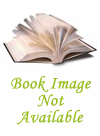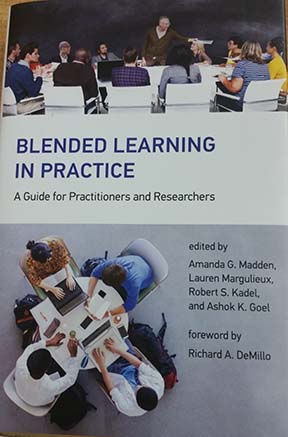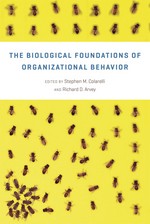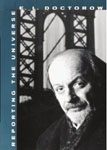Book Details

ORGANIZATIONAL COGNITION AND LEARNING : BUILDING SYSTEMS FOR THE LEARNING ORGANIZATION
Description
Managing organizational cognition and learning has been the subject of many studies and publication and is considered a major source of competitive advantage in the knowledge-based economy in knowledge intensive and traditional business. Organizational Cognition and Learning: Building Systems for the Learning Organization addresses the concept of organizing that is centered around collective learning in organizations and on the learning organization paradigm.
Organizational Cognition and Learning: Building Systems for the Learning Organization presents a theory of organizational learning based on a model of organizational memory, explaining organizational processes and dynamics through which organizational memory is built and updated. Organizational Cognition and Learning: Building Systems for the Learning Organization provides a methodology and several tools to elicit and map organizational memory contents, based on the analysis and modelization of discourses through qualitative and quantitative techniques, examples of applications, implications for practice, and a research agenda for the development of methodologies and systems for the learning organizations.
Content
iii
Organizational
Cognition and Learning:
Building Systems for the
Learning Organization
Table of Contents
Foreword
...........................................................................................................
ix
Preface
.............................................................................................................
xiv
Section.I:.
Organizational.Learning
Chapter
.I
Managing.Knowledge.in.the.Cognitive.Organization
...................................
1
The Digital Revolution and the Cognitive Machine
.................................
2
The Digital Revolution and the Cognitive Organization
.........................
5
The Emergence of Knowledge Management
............................................
7
Filling the Gap Between Knowledge and Learning
...............................
14
Conclusion: Knowledge Management in an Organizational
Learning Perspective
........................................................................
17
Chapter
.II
Complexity.as.a.Resource
..............................................................................
23
The Experience of Complexity
...............................................................
24
Experiencing Complexity: The Paradoxes
.............................................
28
Coping with Paradoxes Through Learning and Language
....................
31
Learning as the Explanation of Complexity
...........................................
33
Conclusion
.............................................................................................
35
v
Chapter
.III
Organizational.
Action:.Persistence.and.Change
..........................................
42
Organizational
Action
............................................................................
43
The Persistence of Organizational
Action
..............................................
46
Organizational Change
..........................................................................
48
Organizational Macrocycles: Persistence and Change
.........................
50
Conclusion
.............................................................................................
52
Chapter
.IV
Collective.Memory
..........................................................................................
56
Organizational Memory:
Artifacts and Culture
.....................................
57
The Vestiges of Memory: Organizational
Artifacts
................................
60
Memory and
Action
................................................................................
63
Organizational Memory as a System of Weak Links:
The Role of
Ambiguity
.......................................................................
66
Conclusion
.............................................................................................
67
Chapter
.V
The.Paradox.of.Learning
...............................................................................
70
Organizational
Artifacts
.........................................................................
71
Artifacts and
Action
................................................................................
73
The
Abuse of Memory: Closed
Artifacts
................................................
76
Open
Artifacts and Grey Knowledge
......................................................
77
Conclusion
.............................................................................................
79
Section.II:.
The.Emergence.of.Organizational.Learning
Chapter
.VI
The.Construction.of.Shared.
World
...............................................................
83
Memory and Organizational Identity
.....................................................
84
The Stabilization of Meaning Through the
Social Construction of Reality
...........................................................
85
Routines and Types: Living in a Taken-for-Granted World
...................
87
Conclusion
.............................................................................................
89
Chapter
.VII
Constructing.Explanations
.............................................................................
93
The Role of Discourse in the Construction of Shared Meaning
.............
94
The Construction of Organizational Memory
Through Explanatory Discourse
........................................................
96
Conclusion: Explanatory Discourse and the
Emergence of Organizing
...................................................................
99
v
Chapter
.VIII
Constructing.Grey.Knowledge
....................................................................
104
Maps, Finds, Oracles
...........................................................................
105
Grey Knowledge
...................................................................................
107
Characteristics of Grey Knowledge
.....................................................
109
The Collective Logic of Grey Knowledge
.............................................
111
The
Ambiguity of Explanations
.............................................................
113
Meaning and Consensus: Organizational Rhetoric
..............................
114
Conclusion: Explanation and Organizational Learning
......................
116
Chapter
.IX
The.Emergence.of.Organizational.Learning
..............................................
120
The Starting Point: Explanatory Discourse
.........................................
121
The MEP
Model
...................................................................................
123
The MEP
Model in
Action:
A Case Study
............................................
125
Conclusion
...........................................................................................
131
Section.III:.
Methods.and.
Tools.for
.the.Learning.Organization
Chapter
.X
Eliciting.Organizational.Discourse
..............................................................
136
Investigating Organizational Memory Through Explanatory
Discourse
........................................................................................
137
A
Methodological Proposal for the
Analysis of Discourse
..................
138
Eliciting Explanatory Discourse
..........................................................
140
Eliciting Explanatory Discourse Through Interviews:
A Practical Example
........................................................................
142
Conclusion
...........................................................................................
146
Chapter
.XI
Mapping.Discourses
......................................................................................
148
Analyzing and Modeling Explanatory Discourse
................................
149
Mapping Explanatory Discourse
.........................................................
151
Conclusion: Toward Modeling Discourses
..........................................
156
Chapter
.XII
Modeling.Discourses
.....................................................................................
159
Systems for Learning Organizations: Rhetoric Machines
...................
160
From Discourses to Rhetoric Machines
...............................................
162
Codifying the Uncertainty and the
Ambiguity of
Verbal Language Through Fuzzy Logic
...........................................
164
v
Components of a Verbal Model
............................................................
167
Fuzzy Reasoning
..................................................................................
169
Fuzzy Multiattribute Techniques
..........................................................
170
An Example of a Linguistic Connective: The Fuzzy Quantifier
...........
172
From Theory to Practice
......................................................................
173
Chapter
.XIII
Modeling.
Verbal.Judgements
......................................................................
178
The Fuzziness of Verbal Judgments
.....................................................
179
A
Model for the Representation of Verbal Judgment:
Logical and Linguistic Truth
............................................................
181
Properties of the Dual Truth Model
.....................................................
185
The Representation of Judgment Through Fuzzy Scales
......................
187
How to
Aggregate Verbal Judgments
...................................................
189
Conclusion
...........................................................................................
192
Chapter
.XIV
Modeling.Rules
..............................................................................................
195
Examples of Verbal Models
..................................................................
196
A
Verbal Model of Organizational
Analysis
.........................................
196
The Representation of Discourses Through a Fuzzy Causal Map
.......
199
Conclusion
...........................................................................................
203
Chapter
.XV
The.Management.of.Grey.Knowledge.
Through.Causal.Maps:.
A.Field.Example
............................................................................................
205
Knowledge Management in Software Development
Through Causal Maps
.....................................................................
206
Critical Issues in Formal Methodology
Adoption for
Software Development
.....................................................................
207
Eliciting and Mappin
Related Books

BLENDED LEARNING IN PRACTICE: A GUIDE FOR PRACTITIONERS AND RESEARCHERS
By MADDEN, MARGULIEUX, KADEL, GOEL

SOCIAL LEARNING : AN INTRO TO MECHANISMS, METHODS AND MODELS
By HOPPITT, WILLIAM
Books by the Same Author
No other books by the same author. Popular Picks on the Month














